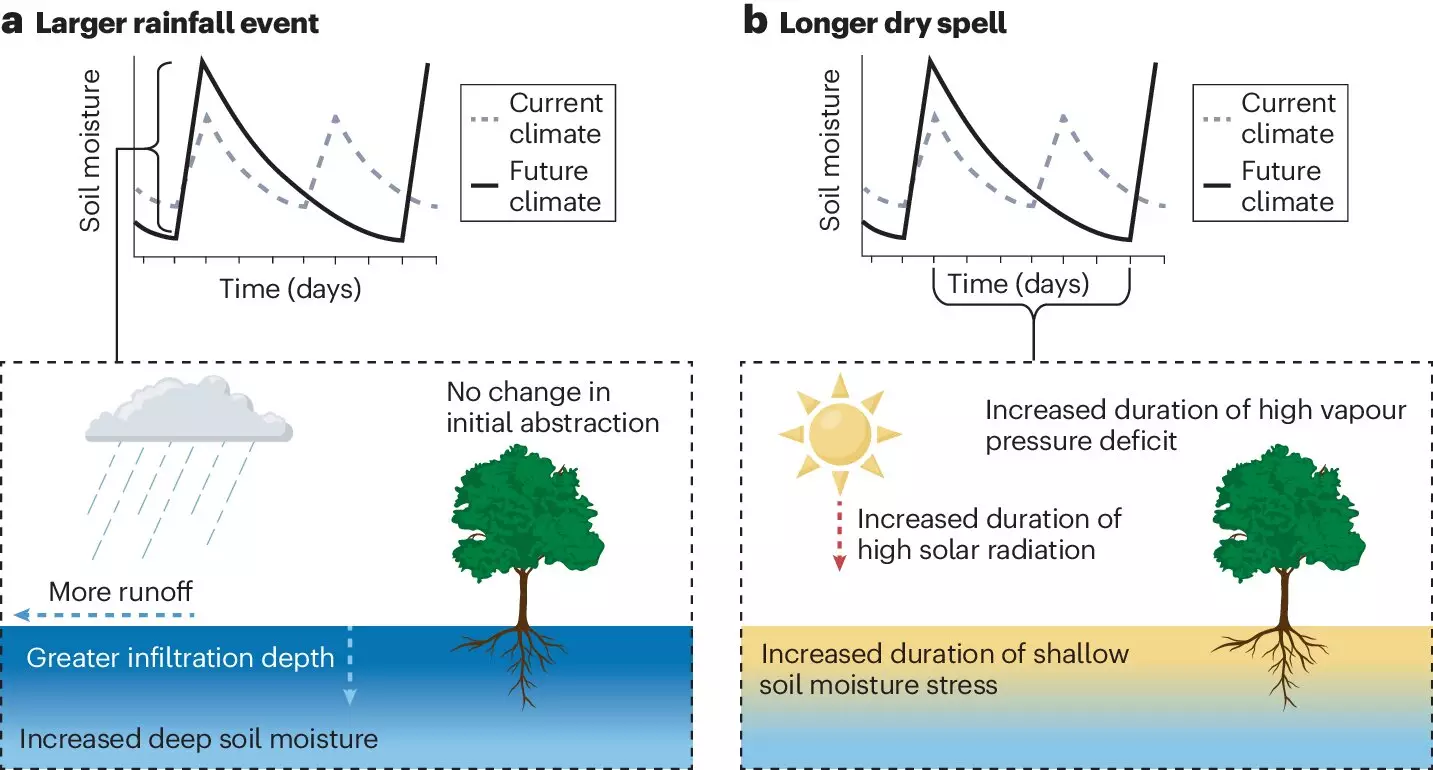The impact of climate change on rainfall patterns is becoming increasingly evident, with April showers turning into deluges and May flowers facing a new reality. A University of Maryland-led study published in Nature Reviews Earth & Environment highlights a global trend towards more intense but less frequent rainfalls throughout the year. This change in rainfall distribution is likely to have a significant impact on plant growth and ecosystem dynamics.
Research conducted by Earth System Science Interdisciplinary Center Researcher Andrew Feldman and colleagues has shown that plants respond differently to the changing rainfall patterns based on their ecosystem type. Dry ecosystem plants, such as those in the American West, tend to benefit from longer dry periods followed by intense downpours. On the other hand, plants in wetter regions may be negatively affected by these changes. The varying responses of plants to rainfall alterations can lead to shifts in the composition of entire ecosystems.
The study found that plants in intermediately wet regions, like the Midwestern United States, experienced the most significant changes in function due to altered rainfall patterns. Photosynthesis, greenness, and growth of plants showed diverse responses to the changing rainfall patterns observed across different regions. In some cases, plants fared worse with less frequent, more intense rainfall, while in others, they showed improvements. These findings highlight the complex interactions between plants and changing environmental conditions.
In addition to altered rainfall patterns, plants also face other long-term climatic changes, such as increasing atmospheric carbon dioxide concentrations and rising temperatures. These factors can further influence plant productivity and ecosystem dynamics. As plants play a crucial role in the global carbon cycle, their responses to changing rainfall patterns have significant implications for crop yields and carbon sequestration from the atmosphere.
Andrew Feldman and his team are currently working on a global analysis of how plants respond to more intense, less frequent rainfall using satellite measurements. The researchers aim to determine whether there is an optimal frequency of rainfall that maximizes plant photosynthesis and growth. Understanding the underlying soil and plant processes driving these responses will be essential for accurately predicting the effects of extreme rainfall events on plant productivity.
The changing rainfall patterns due to climate change are expected to have a significant impact on plant growth and ecosystem dynamics. By studying how different plant species respond to these alterations, researchers can gain valuable insights into the resilience of ecosystems facing environmental challenges. Continued research in this area is essential for developing strategies to mitigate the effects of changing climate conditions on plant productivity and biodiversity.



Leave a Reply